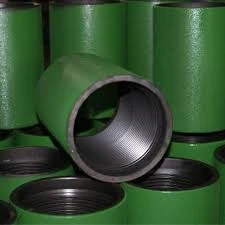- Afrikaans
- Albanian
- Amharic
- Arabic
- Armenian
- Azerbaijani
- Basque
- Belarusian
- Bengali
- Bosnian
- Bulgarian
- Catalan
- Cebuano
- Corsican
- Croatian
- Czech
- Danish
- Dutch
- English
- Esperanto
- Estonian
- Finnish
- French
- Frisian
- Galician
- Georgian
- German
- Greek
- Gujarati
- Haitian Creole
- hausa
- hawaiian
- Hebrew
- Hindi
- Miao
- Hungarian
- Icelandic
- igbo
- Indonesian
- irish
- Italian
- Japanese
- Javanese
- Kannada
- kazakh
- Khmer
- Rwandese
- Korean
- Kurdish
- Kyrgyz
- Lao
- Latin
- Latvian
- Lithuanian
- Luxembourgish
- Macedonian
- Malgashi
- Malay
- Malayalam
- Maltese
- Maori
- Marathi
- Mongolian
- Myanmar
- Nepali
- Norwegian
- Norwegian
- Occitan
- Pashto
- Persian
- Polish
- Portuguese
- Punjabi
- Romanian
- Russian
- Samoan
- Scottish Gaelic
- Serbian
- Sesotho
- Shona
- Sindhi
- Sinhala
- Slovak
- Slovenian
- Somali
- Spanish
- Sundanese
- Swahili
- Swedish
- Tagalog
- Tajik
- Tamil
- Tatar
- Telugu
- Thai
- Turkish
- Turkmen
- Ukrainian
- Urdu
- Uighur
- Uzbek
- Vietnamese
- Welsh
- Bantu
- Yiddish
- Yoruba
- Zulu
Understanding the Concept and Functionality of Bull Plugs in Various Applications
Understanding the Bull Plug Definition and Applications
In the realms of both engineering and plumbing, the term bull plug refers to a specific type of fitting used to seal ports or openings in pipelines or mechanical systems. This component plays a critical role in ensuring systems operate efficiently and reliably by preventing leaks and protecting internal mechanisms from contamination.
A bull plug is typically characterized by having a cylindrical shape that allows it to fit snugly into the opening it is sealing. The design often includes threads on the external surface, enabling it to be screwed into the port, which ensures a tight fit. Some bull plugs may also feature a hexagonal or square head, allowing for easy installation and removal using wrenches or pliers.
Materials Used
Bull plugs can be manufactured from a variety of materials, each suited for different environments and applications. Common materials include
1. Metal Steel or brass bull plugs are commonly used in high-pressure systems due to their strength and resistance to corrosion. These are ideal for oil and gas pipelines or any application that involves high temperatures and pressures. 2. Plastic In less demanding environments, such as residential plumbing, plastic bull plugs are frequently employed. They are lightweight, resistant to certain chemicals, and easy to install, making them a popular choice for water pipes.
3. Rubber Rubber bull plugs are often used in temporary applications where flexibility and ease of installation are required. They are particularly useful in situations where a seal is needed for a shorter duration.
Applications
bull plug definition

The applications of bull plugs are extensive
1. Plumbing Systems Bull plugs are widely used to seal unused ports in residential and commercial plumbing, preventing leaks and potential water damage. When a fixture or appliance is removed, a bull plug can be used to block the pipe temporarily until a new installation is made.
2. Automotive Industry In the automotive sector, bull plugs serve to seal openings in engine blocks and other components during maintenance. They ensure that dirt and contaminants do not enter the system, potentially causing damage or failure.
3. Industrial Equipment In manufacturing and processing plants, bull plugs can be found sealing ports in machinery and equipment. This prevents leaks of fluids and gases, which is critical for maintaining operational efficiency and safety.
4. Construction and HVAC In construction, bull plugs are utilized in various plumbing and HVAC installations to close off pipes or ducts that are not yet in use. This is essential during subsequent phases of construction where systems might not be fully operational.
Conclusion
The bull plug, while often overlooked, is an essential component in various systems where sealing is necessary. Its ability to create a watertight or airtight seal makes it invaluable in plumbing, automotive, industrial, and construction applications. Choosing the right type of bull plug—whether metal, plastic, or rubber—depends largely on the specific requirements of the project in question, including pressure, temperature, and the nature of the fluids involved. As we continue to innovate and evolve in engineering practices, the bull plug remains a simple yet critical solution to sealing needs across multiple industries, contributing to the safety and efficacy of modern systems.
-
Tubing Pup Joints: Essential Components for Oil and Gas OperationsNewsJul.10,2025
-
Pup Joints: Essential Components for Reliable Drilling OperationsNewsJul.10,2025
-
Pipe Couplings: Connecting Your World EfficientlyNewsJul.10,2025
-
Mastering Oilfield Operations with Quality Tubing and CasingNewsJul.10,2025
-
High-Quality Casing Couplings for Every NeedNewsJul.10,2025
-
Boost Your Drilling Efficiency with Premium Crossover Tools & Seating NipplesNewsJul.10,2025







